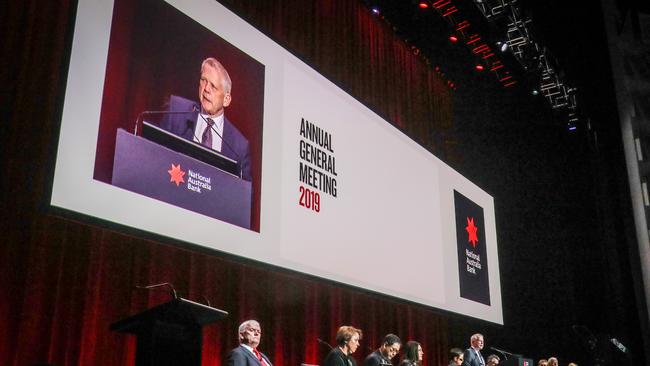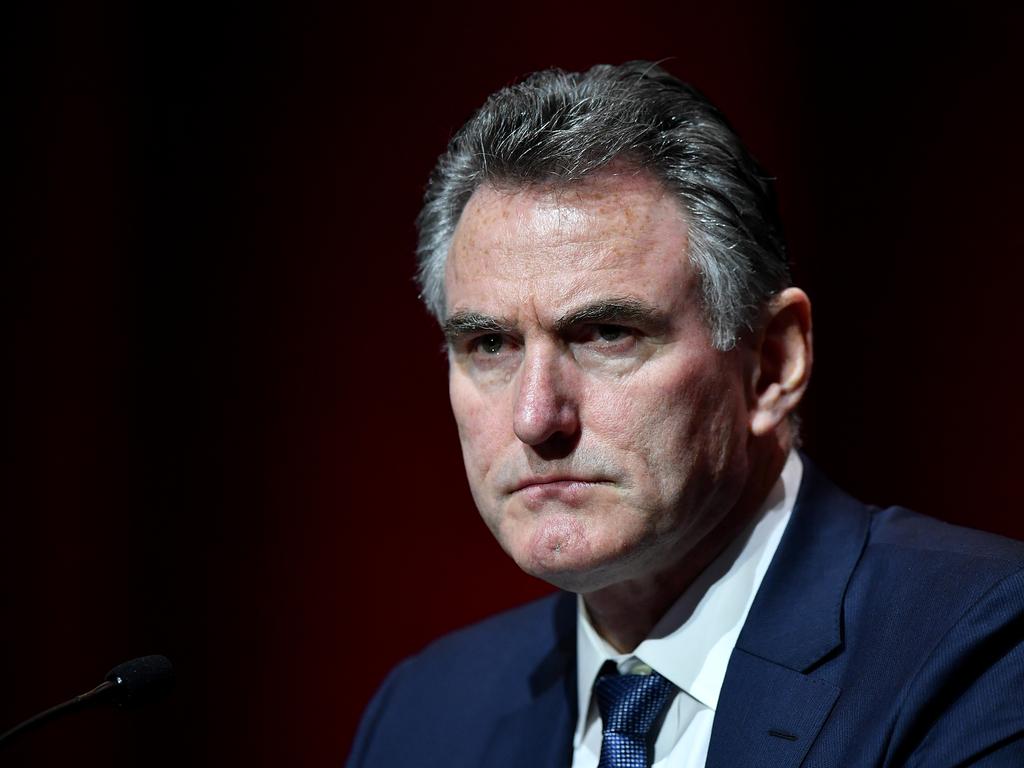NAB delayed returning customers’ money: ASIC
NAB defied ASIC pressure to return money to customers who had been wrongly charged even after warnings.

National Australia Bank continued to defy pressure from the corporate watchdog to return money to customers who had been wrongly charged even when senior bankers were warned by internal audits about potential fee rorts in the wealth business, court documents show.
An expanded timeline of NAB’s fees-for-no-service scandal lodged in the Federal Court this week by the Australian Securities & Investments Commission shows how senior members of the bank received a stream of warnings about poor compliance in the wealth business, at the same time the company’s senior legal officers were resisting requests to properly compensate customers.
In an explosive lawsuit alleging “several thousand” breaches of the law for a near-decade-long fees-for-no-service scandal that could spark a potential penalty in the hundreds of millions of dollars, ASIC has referred to internal reports that repeatedly sounded alarm bells among senior bankers after the watchdog first asked NAB to examine whether it was caught up in the fees-for-no-service scandal in June 2015.
ASIC claims that by April 2016, NAB’s internal audit team found a lack of clarity about whether ongoing fees were being “appropriately charged” or monitored, and that by September 2016, a NAB internal report warned that the bank could be engaging in “prohibited charging”.
The fees-for-no-service scandal, which was first made public by ASIC in 2016, has tarred almost every large financial institution in Australia after the industry failed to adapt to Future of Financial Advice reforms.
It was at that point that NAB first publicly admitted to having charged customers while failing to provide services, although its estimate of the total fine was put at a fraction of the potential issue.
Over the next two years, NAB engaged in legal trench warfare with ASIC over proposed methods to compensate its customers, which were “consistently rejected as unacceptable” by the corporate regulator.
By mid-2017, NAB found there was no paper trail tying any services to more than $50m in fees charged to about 50,000 customers.
According to documents extracted from the bank for Kenneth Hayne’s royal commission, in November 2017, ASIC executive Louise Macaulay warned NAB general counsel Sharon Cook that the bank’s approach to customer remediation was “out of step” with the compensation programs adopted by other major banks and was falling behind its rivals. The bank had attempted to convince ASIC to allow it to compensate customers based on sampling client files in mid-2016, and another remediation model based on a fair value exchange was floated at the end of 2016. In April 2017 it suggested testing whether advisers had interacted with their clients in order to determine whether it needed to refund them, and then in April 2018 it put forward an opt-in model. All were rejected by ASIC. In his final report, Mr Hayne castigated NAB’s senior ranks for providing “inadequate” information about the issue to the board and failing to make it clear that ASIC was stalking the company over the fees-for-no-service problem.
“Negotiations between NAB and ASIC in relation to the adviser service fees issues dragged on for years,” the former High Court justice said.
“NAB made many proposals to ASIC about how it would investigate the issues and compensate members, and ASIC rejected those proposals — describing them more than once as not being ‘customer centric’.
“While these negotiations dragged on, NAB was not remediating its customers,” Mr Hayne said.
ASIC alleges that by early March in 2018, NAB’s former head of wealth Andrew Hagger was sent an internal note asking him to accept that there was a “residual risk” in the business, which was given a “critical” and “excessive” rating, about not providing services to customers and failures with its disclosure documents. Then followed a draft report by consultancy PwC on March 29, 2018, which highlighted a range of defects in its systems relating to risks of fee-for-no-service conduct, according to ASIC.
However, in April, just days later, more than three years after the issues about the problem fees were reported to ASIC, NAB proposed the opt-in remediation scheme that was so bad that departed chief executive Andrew Thorburn later conceded that the offer should never have been made.
The proposal sparked a brutal letter from ASIC enforcement director Tim Mullaly and wealth director Joanna Bird to NAB lawyer Ms Cook, arguing the bank’s proposed solution failed “to adequately reflect any insight into the seriousness of the suspected misconduct” and accused the bank of dragging its feet.
“The latest proposal retreats even further from what we would expect NAB to consider to be in the interests of its customers,” the ASIC letter said. A month after the letter, ASIC claims that in early July 2018 a further memorandum was prepared for Mr Hagger to approve another “excessive risk” notification after the company found its compliance function within NAB’s financial advice division was “largely ineffective”, including in relation to its fees-for-no-service issues, and was not expected to be fixed until September 2019. ASIC has used these events to allege that NAB was aware that its systems would not be able to assure it was not charging fees for no service from May 31, 2018.
“However, NAB did not stop charging fees to its customers until 4 February 2019.”
NAB said in February 2019 it started switching off fees for all customers with ongoing fee arrangements and has stopped entering into new ongoing fee arrangements.
In a blistering missive in his final royal commission report, Mr Hayne said the fact that NAB “either did not grasp this basic proposition or was unwilling to face the consequences of having done so is troubling”.
“Charging for what you do not do is dishonest,” Mr Hayne said.
“That its General Counsel (Ms Cook) should be complaining to ASIC, as recently as April 2018, that having to pay back what had been taken was unfair to NAB, is, if anything, even more troubling. It suggests an abiding blindness to the seriousness of the underlying conduct.”





To join the conversation, please log in. Don't have an account? Register
Join the conversation, you are commenting as Logout